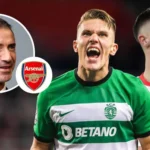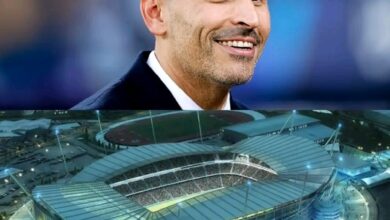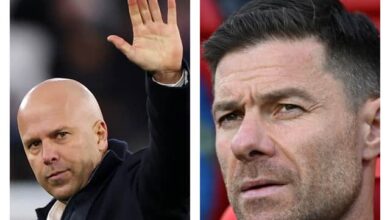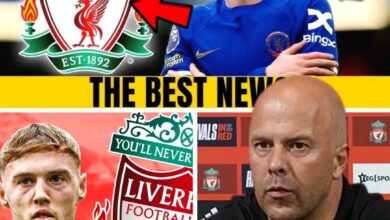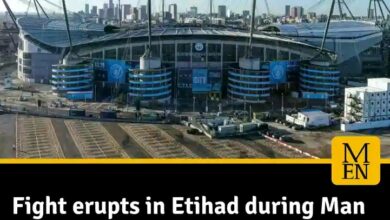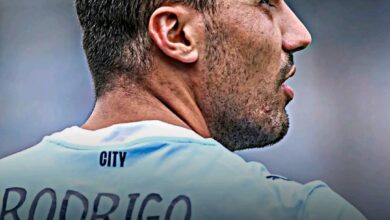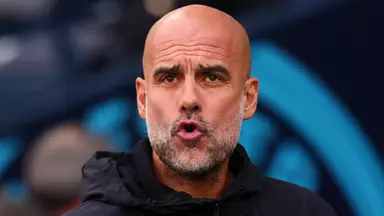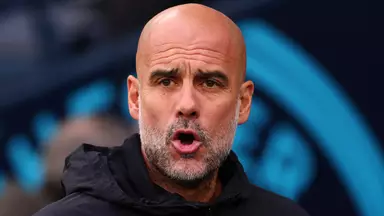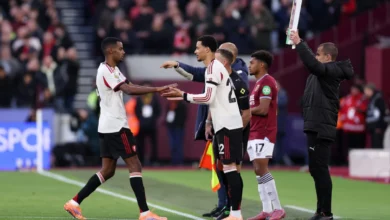Arsenal’s Summer Gamble: £204 Million Spent, But One Glaring Issue Lingers
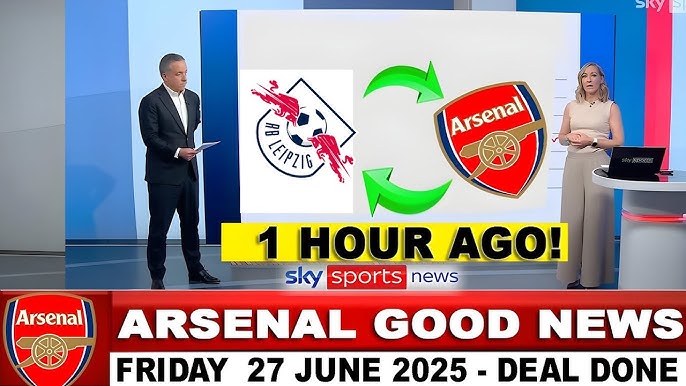
The summer of 2025 has been a whirlwind of activity at the Emirates Stadium, a testament to Arsenal’s unwavering ambition to reclaim their place at the summit of English football. Under the meticulous guidance of Mikel Arteta and the shrewd dealings orchestrated by sporting director Andrea Berta, the Gunners have splashed an impressive £204 million on six new recruits, seemingly constructing a squad poised for a sustained assault on the Premier League title and a deep run in the Champions League. Yet, as the ink dries on these blockbuster deals and the pre-season tour of Asia looms, a singular, palpable concern persists: has Arsenal truly strengthened their squad in terms of net personnel, or have these significant
investments merely replaced the void left by departing figures, leaving one glaring, unresolved issue that could plague Mikel Arteta’s carefully constructed plans?
The Dawn of a New Era: Arteta’s Blueprint and the Pursuit of Perfection
For seasons now, Arsenal have been on an upward trajectory, transforming from a team adrift in the mid-table wilderness to genuine title contenders. The foundations laid by Mikel Arteta – a blend of tactical discipline, relentless pressing, and fluid attacking football – have cultivated a vibrant, youthful squad that has captivated audiences. However, the fine margins of the Premier League and the unforgiving demands of European competition have highlighted areas where even the most promising setups can falter. Consistency, depth, and the ability to pivot tactically when faced with unforeseen challenges are paramount. This summer, therefore, was not merely about adding talent, but about engineering a squad that could withstand the rigours of a grueling
campaign, possessing both star quality and reliable alternatives. The stated aim: to give Mikel Arteta the “perfect Premier League squad,” a lofty goal that necessitated significant financial backing and meticulous scouting.
Andrea Berta, widely regarded as one of the sharpest minds in football recruitment, has certainly been busy. The swift conclusion of several high-profile deals signaled Arsenal’s intent. The early moves included a cross-London transfer for Kepa Arrizabalaga from Chelsea, a deal valued at a modest £5 million. This was swiftly followed by the much-anticipated arrival of Martin Zubimendi from Real Sociedad for £55 million, a long-standing target for the Gunners. Completing the initial trio was Christian Norgaard, joining from Brentford for £12 million.
By mid-July, the Emirates was poised to welcome three more significant additions. Noni Madueke, another player making the short journey from Chelsea, commanded a £52 million fee, while promising defender Cristhian Mosquera arrived from Valencia for £16.5 million. The marquee signing, however, and arguably the most crucial piece of Arteta’s puzzle, was Viktor Gyokeres, whose £63.5 million transfer from Sporting CP addressed a protracted need for a prolific number nine. These six signings represent a colossal investment, pushing Arsenal’s summer spending beyond the £200 million mark. On paper, it speaks volumes about the club’s ambition and their belief in Arteta’s vision.
A Deep Dive into the New Additions: Roles and Expectations
Each of the new recruits brings a distinct set of skills and a specific purpose to Arteta’s revamped squad.
Kepa Arrizabalaga (£5m from Chelsea): The acquisition of Kepa raised a few eyebrows, primarily due to his inconsistent spell at Chelsea. However, at £5 million, it represents a calculated gamble on a goalkeeper with undeniable shot-stopping ability and experience at the highest level. His distribution, often a key facet of Arteta’s build-up play, has been lauded in the past, and a change of scenery could revitalise his career. For Arsenal, Kepa provides crucial competition for the existing number one, elevating standards in training and offering a reliable alternative should injury or a dip in form affect the incumbent. His arrival suggests a desire for greater depth and stability in a position that can make or break a title challenge.
Martin Zubimendi (£55m from Real Sociedad): This was a transfer saga that finally reached its conclusion. Zubimendi is a quintessential modern defensive midfielder, renowned for his exceptional positional awareness, astute tactical intelligence, and a passing range that allows him to dictate the tempo of games from deep. He is a master of breaking up opposition attacks, shielding the backline, and seamlessly transitioning play from defence to attack. His ability to read the game and intercept passes is crucial for a team that thrives on regaining possession quickly. In Arteta’s system, he offers a deep-lying playmaker who can relieve pressure on Declan Rice, providing a different dimension to the midfield or forming a formidable double pivot. His signing underscores Arsenal’s commitment to controlling the midfield and building attacks from a solid foundation.
Christian Norgaard (£12m from Brentford): While less glamorous than some of the other signings, Norgaard’s arrival from Brentford is a smart piece of business. The Danish international brings a wealth of Premier League experience, an exemplary work rate, and a robust defensive presence in midfield. He is known for his tenacity, aerial prowess, and leadership qualities. Norgaard offers a reliable, no-frills option who can slot into the defensive midfield role, providing cover for Zubimendi or Rice, or even filling in as a temporary solution in the backline if needed. His relatively low fee for a proven Premier League player makes him an excellent value addition, bolstering the squad’s resilience.
Noni Madueke (£52m from Chelsea): Another intriguing cross-London switch, Madueke’s transfer signifies Arsenal’s continued investment in explosive, direct attacking talent. A winger with blistering pace, dazzling dribbling skills, and an eye for goal, Madueke offers versatility across the front line. While Bukayo Saka and Gabriel Martinelli have cemented their places, the demands of multiple competitions necessitate robust alternatives. Madueke provides a different attacking profile, capable of stretching defences and creating opportunities in wide areas. His potential is immense, and under Arteta’s tutelage, he could flourish into a genuinely world-class attacker, adding an unpredictable element to Arsenal’s formidable attack.
Cristhian Mosquera (£16.5m from Valencia): The young Spanish defender is a long-term investment, yet one that addresses immediate concerns. Andrea Berta’s reported securing of Mosquera is said to “solve three major Arsenal problems.” While the article doesn’t specify these, one can infer they relate to defensive depth, youth injection in the backline, and potentially a ball-playing centre-back to complement Saliba and Gabriel. Mosquera’s physical attributes, comfort on the ball, and impressive potential make him an ideal candidate to grow into a key figure. He offers a vital squad member capable of stepping in when injuries or rotation demand, ensuring the defensive solidity remains intact throughout the season.
Viktor Gyokeres (£63.5m from Sporting CP): This is the game-changer, the “big signing” Arsenal have been “crying out for a new striker for a number of transfer windows now.” Gyokeres arrives with a reputation as a prolific goalscorer, a powerful and agile centre-forward who can hold up play, run in behind, and finish clinically. His physical presence will add a new dimension to Arsenal’s attack, allowing them to vary their approach against different opponents. For too long, Arsenal have relied on attacking midfielders and wingers for their goal output, or a less conventional false nine. Gyokeres provides that focal point, a player who can consistently hit the back of the net and relieve pressure on the creative players. The reported “collapse fear” during negotiations highlights the intense desire for his signature and the relief at his eventual arrival. The onus will be on him to convert chances and elevate Arsenal’s offensive threat to an elite level.
The Balancing Act: Six In, Six Out – The Glaring Squad Issue
While the calibre of players brought in is undeniably impressive, the crux of the “glaring squad issue” lies not in the quality, but in the net change of personnel. The article explicitly states that Arsenal have “waved goodbye to six first-team players this summer, meaning the new signings just take the place of those departed players.” This numerical parity is where the true challenge for Mikel Arteta emerges.
To elaborate, let’s assume for a moment the six departed first-team players might have included a mix of loan returns, players sold for squad balancing, or those reaching the end of their contracts. For instance, perhaps a backup goalkeeper (e.g., Runar Alex Runarsson), a defensive midfielder (e.g., Albert Sambi Lokonga or an expired loan like Jorginho from a previous season), a rotational full-back (e.g., Nuno Tavares), a fringe attacking midfielder (e.g., Emile Smith Rowe or Fabio Vieira moving on for more game time), a young centre-back (e.g., Reuell Walters on loan or sold), and a backup striker (e.g., Eddie Nketiah finally seeking a permanent starting role elsewhere).
If this scenario holds true, then the new additions, while superior in many cases, are filling existing gaps rather than creating a deeper, more robust squad in terms of overall numbers. The issue isn’t a lack of quality – Arsenal have clearly invested in that – but potentially a lack of genuine surplus depth.
The “juggling act” for Arteta will be immense. The modern game, especially for clubs competing on four fronts (Premier League, Champions League, FA Cup, League Cup), demands a squad of around 22-25 top-tier players who can seamlessly step in without a significant drop-off in quality. If the six departures have left like-for-like numerical replacements, then a run of injuries, particularly to key positions, could still expose a vulnerability. For example, if both Martinelli and Madueke were sidelined, or if Gyokeres faced a lengthy spell out, would the attacking options still feel as potent? Similarly, while Zubimendi and Norgaard strengthen the midfield, what if Rice or Odegaard were unavailable for an extended period?
The concern, therefore, is about genuine, versatile depth across every position. Are there enough high-quality options at full-back, beyond the undisputed starters? Is there sufficient cover for the creative number 10 role? Can the defensive unit maintain its high standards if one of the primary centre-backs is absent? The departure of six players, even if they were deemed surplus to requirements or seeking new challenges, reduces the overall pool of available bodies. Arteta will need to rely heavily on the fitness of his core players and the rapid integration of the new signings.
Tactical Nuances and Pre-Season Integration
Mikel Arteta’s tactical philosophy is built on intensity, control, and fluidity. The new signings are meticulously chosen to fit this mould. Gyokeres provides a different kind of nine, offering a focal point that allows wingers like Saka, Martinelli, and Madueke to flourish with space. Zubimendi offers the tactical intelligence to anchor the midfield, freeing up creative players. Mosquera strengthens the defensive foundation. The pre-season tour of Asia will be absolutely critical for the new faces to gel with their new teammates, understand Arteta’s intricate tactical demands, and build crucial on-pitch chemistry. This period allows for experimentation, forging new partnerships, and acclimating to the physical and mental demands of a top Premier League club. The success of this integration will determine how quickly Arsenal can hit the ground running when the 2025/26 season commences.
Looking Ahead: High Expectations and the Season’s Challenges
The significant investment and the quality of the new arrivals have undoubtedly ratcheted up expectations at Arsenal. Fans, buoyed by the club’s progressive trajectory, will anticipate a renewed challenge for the Premier League title and a stronger showing in the Champions League. The new Sky Sports deal, promising over 1,400 live matches across the Premier League and EFL, including an increase of up to 100 more Premier League games next season, highlights the growing financial landscape of English football and the resources available to top clubs. Arsenal’s spending reflects this environment and their determination to be at the forefront.
However, the “glaring squad issue” remains a shadow over an otherwise stellar transfer window. While Andrea Berta has undoubtedly bolstered key areas, the true test will come during the unforgiving winter schedule, the inevitable periods of injury and suspension, and the tactical battles that define a long season. Arteta’s managerial acumen will be challenged not only to maximize the output of his new stars but also to manage the inevitable strain on his existing personnel.
In conclusion, Arsenal’s summer 2025 transfer window has been a statement of intent, a bold declaration of their ambition. The £204 million investment in six high-calibre players has addressed critical deficiencies and added significant quality across the pitch, particularly in the long-sought-after striker position. Yet, the simultaneous departure of six first-team players means that the squad’s numerical depth, rather than outright quality, remains the fundamental concern. As the team embarks on its pre-season tour, Mikel Arteta holds the reins of a squad brimming with talent, but one that will require shrewd management and perhaps a stroke of luck on the injury front to navigate the challenges ahead and truly achieve the “perfect Premier League squad” status they so covet. The season of 2025/26 promises to be a defining one for the Gunners, a true test of their revamped arsenal and their ability to overcome the subtle, yet potentially decisive, issue of true squad depth.



